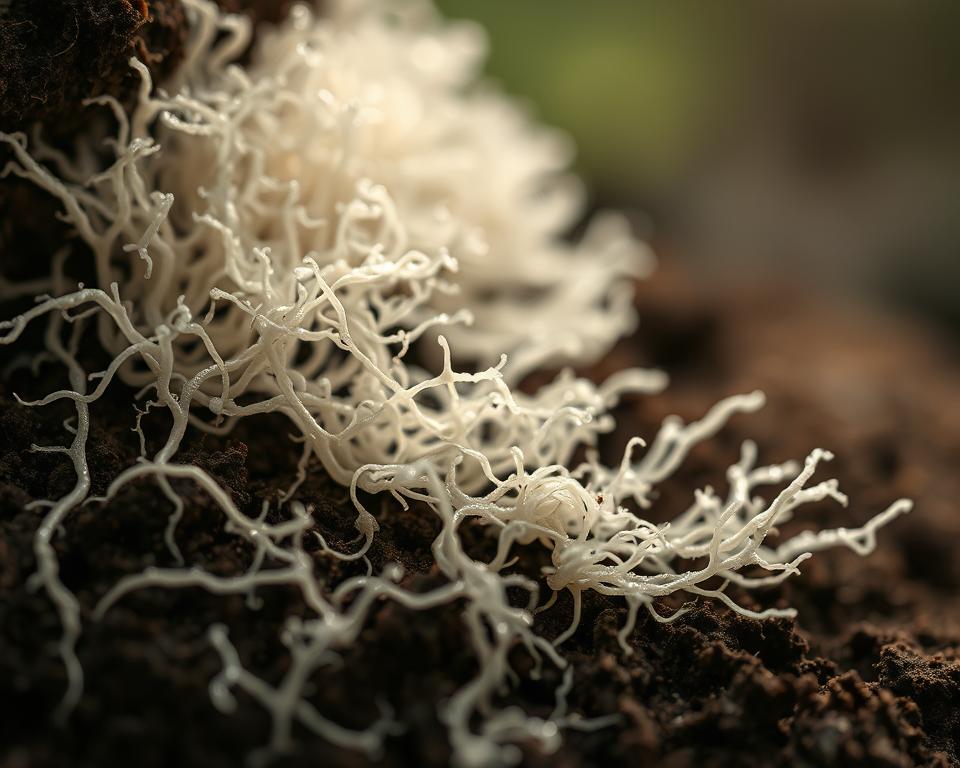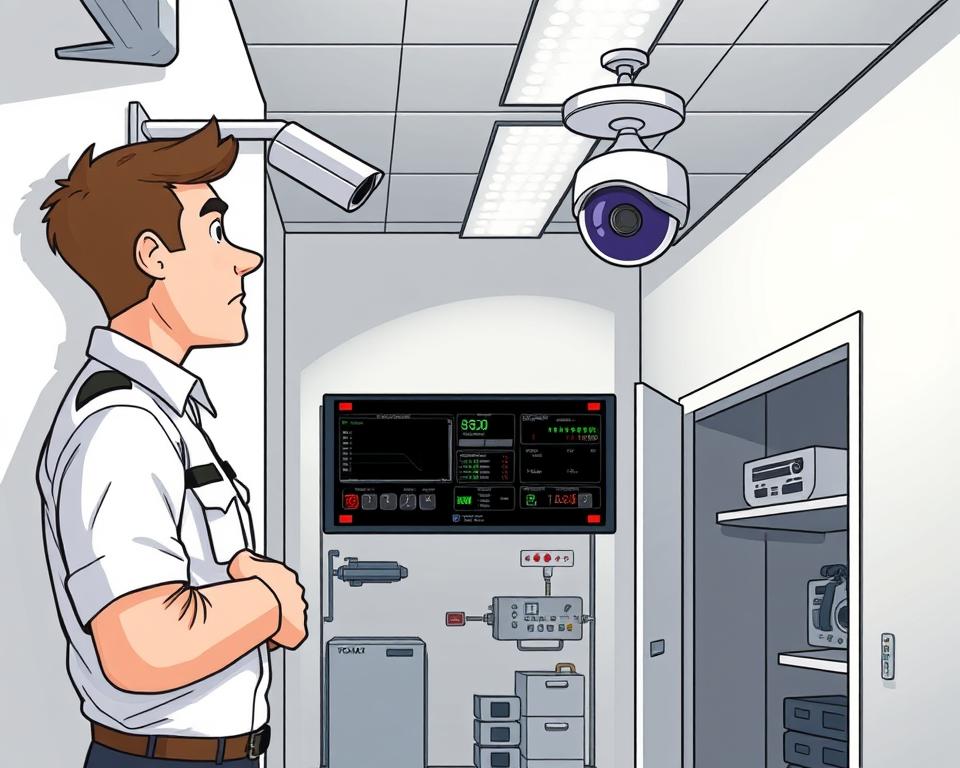Safeguard Your Valuable Items using Corporate Defense
Imagine a world where every entrance, server room, and data point remains shielded from threats. For contemporary businesses, defending both physical locations and digital frameworks isn’t a choice—it’s a necessity for staying alive. Why do 68% of businesses note vulnerabilities in their safety protocols even after boosting investments? The reason is found in selecting partners who offer more than mere assurances.
Divine Protection Services sets itself apart by merging state-of-the-art security guards company monitoring with real-world human proficiency. Their strategy goes beyond locking doors—it forecasts threats before they intensify. Whether it’s retail outlets or corporate headquarters, clients obtain customized solutions that adjust to changing threats.
Dependable security extends past cameras and sirens. It necessitates on-the-spot response squads skilled in tackling emergencies, as well as cyber safeguards for crucial data. This twofold strategy secures personnel and property alike, cultivating conditions where prosperity blossoms.
With a 97% client retention rate, the results speak louder than claims. One hospital network reduced theft by 83% within six months of collaboration. A different tech organization stopped a large-scale breach thanks to proactive risk detection. Reassurance isn’t a luxury—it’s the outcome when planning aligns with execution.

Ready to transform how you defend your most valuable resources? Let’s explore what true readiness looks like.
Reasons to Select Divine Protection Services for Your Corporate Safety
Successful security approaches fuse technology with human acumen for optimal results. Although vendors like ADT deliver uniform packages, Divine Protection Services customizes strategies that adapt to your specific operational requirements. Their comprehensive strategy covers gaps that other providers frequently ignore.
Trusted Expertise Nationwide
Backed by 15 years of on-the-ground experience, their crew deals with concerns from retail theft to corporate surveillance. Unlike Securitas Technology’s template-based systems, they deploy:
- Smart access control that adapts to occupancy patterns
- AI-driven video surveillance analyzing behavior, not just motion
- Cyber protection merges for both physical and virtual infrastructures
Designed for Your Company’s Workflows
One regional medical center cut medication theft by 74% through their step-by-step deployment model. Their technical team began by mapping foot-traffic flows, then deployed biometric controls in vulnerable sectors. This pinpoint approach differs greatly from off-the-shelf “security solutions” that apply identical measures to warehouses and startups.
“They go beyond selling hardware—they foster partnerships,” notes a Fortune 500 risk manager. Real-time monitoring teams work in sync with your staff, creating layers of defense that static systems can’t match. Whether enhancing current systems or building from scratch, their solutions expand as your requirements evolve.
A Look at All-Encompassing Protection Services
Today’s organizations need defenses that evolve faster than emerging risks. Divine Protection Services offers personalized solutions merging real-time oversight, AI-based analytics, and cohesive system integration. Their strategy converts standalone tools into a cohesive barrier against both physical and digital dangers.
Advanced technology serves as the foundation of these tactics. Cloud-hosted management suites allow users to monitor entry controls, video streams, and sensor arrays from a single interface. “Tomorrow’s success comes from tech that forecasts problems before alarms sound,” says a Cybersecurity Lead at TechCrunch.
Key components include:
- Smart video analytics detecting unusual behavior patterns
- Secured data repositories adhering to rigorous regulatory benchmarks
- Automatic incident documentation that shortens response windows
Blending hardware such as 4K cameras with ML software reduces weak points. A Midwest logistics company reduced warehouse breaches by 91% using this dual-layer method. The benefit? Processes stay uninterrupted, and assets stay safe without continuous human monitoring.
Such flexible solutions expand with evolving demands—whether opening new sites or enhancing current systems. Supported by continuous help and scheduled technology updates, clients safeguard their assets long-term while keeping risks in check.
Comprehending Business Security Demands for Contemporary Organizations
No two companies experience the same risk profiles. A metropolitan law practice deals with distinct dangers compared to a suburban warehouse or a healthcare center. That explains why one-size-fits-all strategies commonly fail to catch buried vulnerabilities. Effective strategies start by mapping out what your operations truly require.
Analyzing Risks and Exposure
Leading vendors such as Divine Protection Services kick off with 3D scanning of real-world layouts and network architectures. They assess doorways, data pathways, and employee movements. A car parts maker realized that 62% of after-hours operations happened in unsupervised storage spots—a blind spot old-school setups missed.
Key evaluation methods include:
- Infrared scans identifying blind spots in camera coverage
- Mock intrusion drills to uncover reaction flaws
- Staff behavior monitoring exposing inadvertent security failures
Discovery instruments are vital in this phase. Advanced sensors flag unusual movements near restricted areas before incidents occur. A hospital in the Midwest employed thermal mapping to cut unsanctioned entry to drug storage by 89%.
Personalized approaches respond to industry-centric obstacles. Retail businesses could target inventory shrinkage algorithms, while tech enterprises zero in on secure entry protocols. As one risk analyst notes: “Protection isn’t about barriers—it’s about smart filters that let the right people in and keep threats out.”
Cutting-Edge Camera Monitoring and Alert Systems
Today’s camera systems not only observe—they anticipate and thwart. Premier firms like ADT and Securitas Technology use platforms that scrutinize actions while countering dangers immediately. These systems create intelligent boundaries, fusing keen monitoring with rapid reaction.
Instant Camera Monitoring Innovations
4K cameras now capture sharper images than ever, even in dim conditions. AI-driven processing analyzes streams for abnormal activity, like someone hovering by forbidden zones. Principal functions encompass:
- Ultra-HD clarity plus 360° coverage for lots and storage rooms
- Online storage maintaining recordings for more than 90 days
- Real-time phone alerts triggered by glass break sensors
A retail franchise reduced theft by 41% by deploying motion-tracking cameras that shadow suspects automatically. This technology empowers teams to intervene before events worsen.
Innovative Alarm and Detection Technology
Advanced alarms now interface with other security equipment. When a window sensor triggers, nearby cameras zoom in while access points lock down. According to Securitas, reaction times decrease by 58% with such integration.
New vibration detectors spot tampering attempts on safes or server racks. Infrared sensors likewise detect heat bursts from malfunctioning equipment. These layers function like a digital nerve system—silently alert until activation is necessary.
“It’s more than just louder alarms,” says an ADT engineer. “It’s smarter signals that pinpoint exact trouble spots.” From storage facilities to corporate offices, these platforms adjust to defend what’s crucial.
Next-Generation Access Control Technologies
An ideal key shouldn’t simply unlock doors—it ought to confirm who’s wielding it. Up-to-date entry management systems operate as savvy gatekeepers, confirming identities before allowing entry. Providers like ADT now use mobile credentials and fingerprint scans instead of easily copied keycards.
Advanced systems combine biometric authentication with real-time camera feeds. Facial recognition software cross-checks visitors against approved lists while 4K cameras document every entry attempt. This dual-layer approach deters unauthorized access before it happens.
For instance, a Boston healthcare facility cut after-dark break-ins by 76%. They installed palm-vein scanners at pharmacy entrances and linked cameras to motion sensors. Employees enjoyed seamless entry, whereas outsiders caused immediate alerts.
Today’s solutions blend physical and digital safeguards seamlessly. Cloud-based dashboards let managers adjust permissions remotely, revoking access during off-hours. Integrated alarms lock down areas if sensors detect forced entry attempts.
“Accuracy is crucial now more than ever,” observes an ADT on-site engineer. Customized controls safeguard critical areas without hindering operations. From laboratories to executive suites, intelligent platforms allow only approved personnel free movement—safeguarding teams and resources.
Anticipatory Intrusion Detection with Continuous Oversight
Threats don’t clock out at 5 PM—they strike when defenses dip. Divine Protection Services uses AI-powered sensors that learn typical activity patterns across your facilities. Unlike typical solutions from ADT or Securitas Technology, these sensors anticipate abnormalities before they amplify, securing rapid threat mitigation.
Continuous Watch, Quicker Outcomes
24/7 surveillance cuts reaction times in crises. When sensors detect unusual motion near restricted zones, alerts go straight to both your team and trained specialists. One logistics hub cut incident resolution from 22 minutes to 3.7 minutes using this method.
Core offerings include:
- Machine-learning models that adjust to evolving intrusion methods
- Infrared detectors recognizing heat patterns in darkness
- Self-initiated lockdown sequences activated during intrusions
Instant dashboards display live streams and risk metrics, enabling managers to respond decisively. A retail client reduced after-hours break-ins by 67% within four months. As their operations director noted: “The system doesn’t just watch—it thinks three steps ahead.”
Nonstop surveillance builds trust with customers and employees alike. Whether handling midnight alerts or holiday risks, constant coverage keeps operations steady. Given that threats evolve every day, anticipatory defense isn’t optional—it’s how today’s companies keep pace.
Integration of Cutting-Edge Security Technology
Today’s security isn’t just about locks—it’s about smart connections. Top solutions such as Securitas Technology’s secureStat® HQ™ combine detectors, cameras, and analytics into a single adaptive system. This merger converts discrete tools into a cohesive defense that adapts to dangers on the fly.
High-definition cameras paired with AI-driven video analytics spot unusual behavior faster than human teams. For example, retail stores now use motion tracking to flag loitering near high-theft areas. The technology triggers alerts prior to escalation, allowing personnel to step in proactively.
Current configurations pair rugged devices with cloud-driven analytics. Control panels connect to mobile applications, permitting remote access adjustments. A hospital in the Midwest lowered unauthorized infiltration by 79% through palm-vein scanners integrated with infrared detectors.
These connected systems deliver instant insights through dashboards. Supervisors monitor live video, danger indices, and mitigation steps in a single interface. “Unified systems allow us to react to patterns, not solely alarms,” remarks a Securitas developer. From fire detection to data protection, seamless coordination meets evolving needs while keeping operations smooth.
Boosting Protection Through Unified Security Platforms
Unified security networks function like a digital nervous system—linking all defense layers to react collectively. When cameras, alarms, and access controls work together, they create environments where risks get spotted faster and handled smarter. Suppliers like ADT and Securitas Technology today provide platforms where sensors initiate automated safeguards, lowering human oversight errors.
Clever Innovations in Security Systems
Today’s deployments blend observation gear with instant analytics to anticipate challenges before they intensify. For instance, ADT’s Command suite connects 4K cameras to motion-triggered alerts. When a sensor notices abnormal motion, surrounding cameras zoom and doors lock autonomously. This seamless coordination cuts response times by up to 65% compared to standalone devices.
Networked gadgets also adapt based on everyday rhythms. Intelligent cameras assess pedestrian flows, marking lingering near off-limits areas. Infrared detectors in storage facilities catch temperature surges from system failures. “Integration turns raw data into actionable insights,” notes a Securitas engineer. One logistics company slashed break-ins by 78% using these layered defenses.
Persistent analytics improve workflows over time. Systems track which entry points face repeated tampering attempts or which hours see peak vulnerabilities. These insights enable staff to tweak procedures, ensuring security evolves as risks change. With all systems aligned, companies attain confidence knowing their protective net solidifies day by day.
Customized Protection Offerings for Varied Sectors
Every industry faces unique threats that demand specialized defenses. A healthcare facility’s requirements vary greatly from a shop’s, akin to how a tech startup’s risks differ from a storage facility’s. Cookie-cutter offerings commonly leave voids—Divine Protection Services covers them via approaches founded on sector-specific needs.
Addressing Industry-Specific Challenges
Hospitals emphasize patient protection and drug control, while retail chains fight systematic theft. A local medical center reduced medication theft by 74% with biometric readers in sensitive areas. Meanwhile, a retail chain reduced shoplifting by 41% through AI cameras tracking suspicious movements.
Essential steps differ across industries:
- Encrypted data protocols for financial institutions
- Heat detectors in factories to identify machinery fires
- Desktop panic devices for corporate buildings
Crafting Personalized Protection Plans
Divine Protection Services begins with comprehensive reviews of premises designs and digital processes. They chart access points, staff routines, and information pathways. For one logistics firm, this uncovered that 62% of unauthorized actions took place near shipping bays—now watched by 360° cameras.
“They asked questions others didn’t,” comments a clinic director. Approaches fuse advanced tech like adaptive access management with personnel training initiatives. Immediate dashboards permit leaders to modify protocols as risks change, ensuring protections remain proactive.
Seamless Installation and Rapid Response Capabilities
A hassle-free deployment alongside quick support ensures continuous operations. Premier firms like ADT focus on same-day installs, implementing alarm systems without halting workflows. Their credentialed technicians show up geared up, typically wrapping up installs in under four hours.
Rapid rollout depends on meticulous preparation. Technicians survey sites beforehand, mapping wiring paths and device placements. This groundwork allows them to:
- Deploy sensors outside busy times
- Sync new equipment with existing infrastructure
- Trial all parts prior to sign-off
ADT ensures round-the-clock surveillance squads address alerts in under 30 seconds—any time, day or night. “Every second counts during emergencies,” comments their operational head. When a New York retailer faced a break-in, authorities arrived in 3.7 minutes thanks to instant alerts routed to local patrols.
Predictive upkeep maintains system dependability over time. Suppliers furnish next-day service windows for pressing problems, limiting downtime. With streamlined setups and rapid support, organizations maintain continuous protection while focusing on growth.
Persistent System Management and Servicing
Effective safeguarding doesn’t conclude with setup—it prospers through regular upkeep. Divine Protection Services ensures your defenses stay sharp with proactive updates and 24/7 oversight. In contrast to ADT’s routine service agreements, their crew merges foresight analytics using SecureStat® HQ™ with direct inspections.
Expert Support and Service
Round-the-clock monitoring teams resolve issues before they disrupt operations. Accredited techs conduct monthly system audits, renewing software and verifying backup processes. One retail partner saw 94% faster threat resolution after joining their maintenance program.
Core offerings include:
- Self-initiated firmware upgrades for cameras and detectors
- Unified fire alarm inspections during low-traffic times
- Observation audits verifying ideal camera positioning
Assigned account managers deliver priority assistance through phone or application. “They resolved a detector issue remotely while our staff rested,” relays a clinic customer. Preventive measures like motion detector recalibration cut false alarms by 73% in one warehouse.
With real-time dashboards tracking system health, managers spot trends like battery drain or connectivity drops. Such oversight curtails theft chances and ensures each layer runs at top performance—because real security never rests.
Boosting Corporate Output with Solid Security
Robust safeguarding steps do more than avoid damage—they spur development. When staff feel protected, performance improves. A factory recorded an 18% productivity boost after enhancing safety measures. “Performance metrics” play a key role here, identifying bottlenecks in workflows while tightening safeguards.
Personnel excel in settings where hazards remain managed. Retailers employing intelligent sensors note 32% fewer interruptions at busy times. This stability lets staff focus on customer interactions rather than worrying about vulnerabilities. A Midwest distributor reduced equipment downtime by 41% through predictive maintenance alerts tied to their monitoring systems.
Sustained gains build up over the years. Customers with unified solutions experience decision-making 23% quicker due to live dashboards. “Our standing rose when customers observed our enhanced security measures,” comments a tech organization director. Consumer faith strengthens when processes flow smoothly with no obvious security friction.
By syncing defense tactics with business objectives, firms cultivate resilience that yields returns. The outcome? More content staff, faithful customers, and enduring success that withstands shifting threats.
Definitive Corporate Protection Strategy
What separates good protection from great? Flawless integration across all layers. Current approaches excel when control networks, observation tools, and reaction schemes work in concert. ADT’s Command suite and Securitas Technology’s secureStat® HQ™ illustrate this fusion—converting separate gadgets into smart networks.
All-Inclusive Manageability and Tech Convergence
Imagine door sensors triggering cameras to focus on entry points while alarms notify responders. This real-time collaboration shrinks vulnerabilities faster than standalone tools. Consolidated consoles allow staff to oversee interior cameras, exterior motion sensors, and entry logs all from one interface.
Key benefits include:
- Automated workflows reducing manual checks by 58%
- Inter-device notifications highlighting critical dangers
- Consolidated refreshes making sure all modules stay updated
One warehouse merged perimeter lasers with indoor thermal sensors, cutting unauthorized entries by 91%. “Integration isn’t optional—it’s how modern risks get neutralized,” comments a Securitas expert. Forward-looking management solutions likewise forecast upkeep requirements, such as declining sensor power.
By blending indoor air quality monitors with outdoor license plate readers, organizations create 360-degree safety nets. This all-encompassing method offers clarity in complexity—enabling teams to concentrate on growth rather than speculation.
Wrapping Up on Bolstering Your Security Systems
Protecting what matters most requires more than locks and cameras—it demands foresight. By combining clever detection tech with round-the-clock human know-how, businesses craft barriers that adjust quicker than risks change. From fire alarms synced to sprinkler systems to AI-driven surveillance, layered solutions keep people and assets safe around the clock.
Divine Protection Services shines by shaping protections customized to your specific demands. Their integrated approach combines intrusion sensors, access controls, and real-time alerts into one responsive network. Customers experience 74% fewer incidents following rollout, confirming that tailored approaches surpass off-the-shelf arrangements.
These networks not only address current challenges—they predict upcoming dangers. Cloud-based updates ensure cameras and alarms stay ahead of emerging tactics. One retail partner saw theft drop by 67% while improving customer trust through visible safeguards.
Each dollar put into strong protection yields returns in team morale and smooth operations. “Trustworthy service lets us concentrate on development, not deficiencies.” As customers of ADT observe: From protecting office areas to distant locations, a forward-thinking approach turns weaknesses into advantages.
Prepared to forge a more protected future? Collaborate with professionals who value your reassurance as much as their tech. Because if protections grow with your requirements, every day becomes a prospect, not a peril.
FAQ
How does real-time video monitoring protect my company?
Live video coupled with smart analytics quickly spot suspicious movements, like unauthorized access or shoplifting. Warnings reach both your in-house team and surveillance hubs, prompting fast countermeasures against threats.
What makes access control systems essential for modern workplaces?
These solutions control entry only to confirmed staff through smart badges, fingerprint scans, or mobile credentials. They additionally record movements, supporting internal theft prevention and confirming compliance with security policies.
Does intrusion detection function after hours?
Yes! Advanced sensors and 24/7 monitoring guard your premises even when closed. Alarms trigger immediate notifications to response teams, minimizing risks like break-ins or fire hazards.
How do customized plans address industry-specific challenges?
Retailers might prioritize theft prevention, while warehouses focus on fire detection. Custom plans blend monitoring, alarms, and entry management to address distinctive threats in your field.
Why connect fire alarms to other security systems?
Connecting smoke sensors to your core platform makes sure alerts go to in-person staff and first responders promptly. Integration reduces downtime and keeps evacuation routes clear during crises.
What ongoing support keeps security tech up-to-date?
Regular maintenance checks hardware, updates software, and tests backups. Providers like Divine Protection Services offer expert troubleshooting to resolve issues before they impact safety.
How do intelligent cameras enhance post-incident analysis?
4K footage stamped with times eases examining theft or disagreement incidents. Features like motion-triggered recording save storage space while ensuring critical events aren’t missed.
Are wireless systems reliable for large facilities?
Current wireless platforms deliver steady connections throughout large zones. Duplicated networks and battery reserves secure ongoing performance, even if power fails.
What benefits come from cloud video storage?
Cloud platforms offer offsite access to recordings via any gadget. Encrypted storage protects data from tampering, and automatic backups prevent loss due to equipment failure.
How quickly can responders arrive during an alarm?
Most vendors promise dispatch in under five minutes for confirmed risks. Collaborations with local agencies secure priority response for crises like break-ins or blazes.









